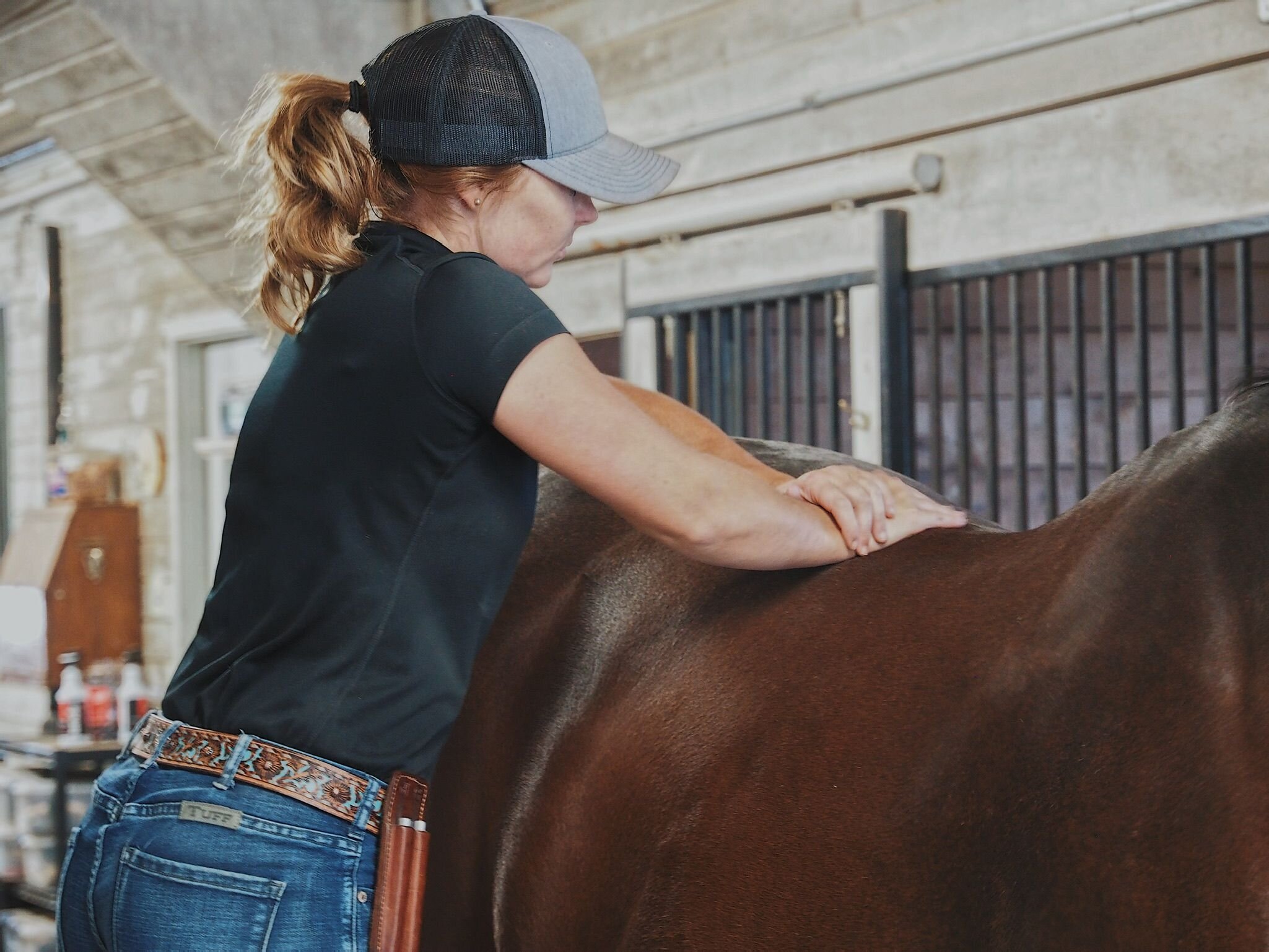
Equine Osteopathy
Equine Osteopathy uses standards developed in human osteopathy, translated, adapted, and modified to the structural and physical needs of the equine. Osteopathy is defined as “a branch of medical practice that emphasizes the treatment of medical disorders through the manipulation and massage of the bones, joints, and muscles.” It is considered separate from traditional (allopathic) medicine because osteopathy emphasizes the musculoskeletal system, thus its name! Osteo refers to bone, and path refers to disease. Osteopaths believe strongly in the healing power of the body and focus on facilitating that strength.
Osteopathy shares many of the same goals as traditional medicine but places a greater emphasis on the relationship between the visceral system (organs), musculoskeletal system (muscles and bones), and craniosacral system (cranium, sacrum, and spine). The focus is treating the WHOLE individual rather than just the symptoms or disease.
Pain is the chief reason patients seek treatment, in any discipline of medicine. Pain is a symptom, not a disease itself, and often originates in the musculoskeletal system. It is critical to first determine the cause of pain, to be able to formulate a treatment plan. Appropriate pain treatment is often manipulation. Many patients find that one or a series of manipulation can drastically improve long-standing pain. Repeated treatments are sometimes needed for optimal health.
The history of Osteopathy dates back to its founding in the 1890s by Dr. Andrew Taylor, who believed that the musculoskeletal system was central to health. Its origins focused on the theory that energy flowing through the nervous system is influenced by the supporting structure that encases and protects it—the skull and vertebral column. A defect in the musculoskeletal system was believed to alter the flow of this energy and cause disease. Correcting the defect cured the disease. Defects were thought to be misalignments—parts out of place by tiny distances. Treating misalignments became a matter of restoring the parts to their natural arrangement by adjusting them.
Schools of osteopathy have since adopted modern science, incorporated it into their curriculum, and redefined their original theory of disease in light of these discoveries. Near the middle of the 20th century, the equivalence of medical education between osteopathy and allopathic medicine was recognized, and the D.O. degree (Doctor of Osteopathy) was granted official parity with the M.D. (Doctor of Medicine) degree. Osteopaths have continued their emphasis on the musculoskeletal system and their traditional focus on "whole person" medicine.
Osteopaths, chiropractors, and physical therapists are the experts in manipulations (adjustments). The theory behind manipulation focuses on joints, mostly those of the vertebrae and ribs. Practitioners manipulate the bones of the skull and peripheral joints to address many different ailments. Manipulation returns the joint to its normal configuration.
Return of the joint to its normal status is often only the first step in treating a disorder. The onset of symptoms could be due to a fall, a stumble, or a mild impact, in which case the manipulation is often a cure. There may be a postural misalignment (such as a short leg), a limp, or a stretched ligament that permits the joint to slip back into dysfunction. Tension, as well as pain, for emotional reasons, can cause muscles to tighten. If the pain is present for any length of time, there could also be muscle deterioration. The osteopathic approach, focused on the whole person, takes all these factors into account in restoring the state of health.
Manipulation has rarely caused problems. The most common adverse event is misdiagnosis.

